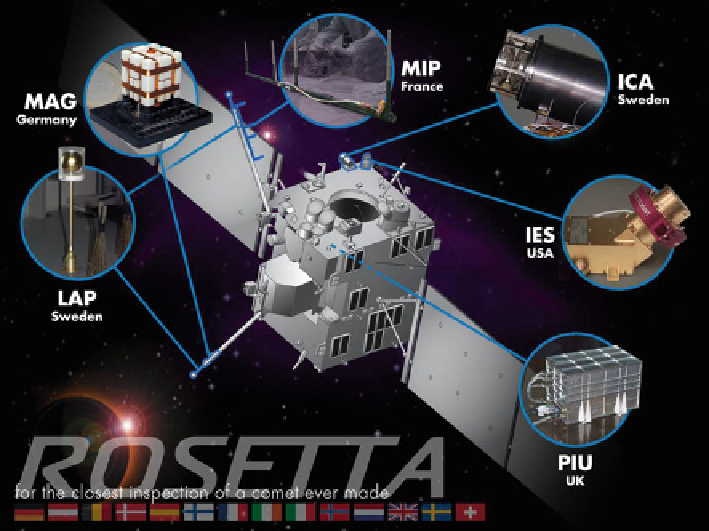Geoscience Reference
In-Depth Information
Fig. 10.1
The particle-and-field experiments included in the Rosetta Plasma Consortium (RPC).
ICA is Ion Composition Analyser, IES is Ion and Electron Sensor, LAP is Langmuir Probe, MAG
is Fluxgate Magnetometer, MIP is Mutual Impedance Probe, and PIU is Plasma Interface Unit
(Courtesy of European Space Agency)
this exciting phase of the mission operation, the spacecraft will continue to move
around the comet to perform remote-sensing observations and in situ measurements
of the gas and dust coma.
The Rosetta Plasma Consortium (RPC) package with a full complement of
particle-and-field experiments (see Fig.
10.1
) will carry out unprecedented study
of the process of comet-solar wind interaction. It is unprecedented because never
before did we have the opportunity to monitor the cometary plasma environment as a
comet moves from large heliocentric distance (
r
> 3AU)to
r
1.5 AU at perihelion,
and beyond, at its vicinity.
To prepare for the plasma measurements, several types of theoretical models of
high level of sophistication have been developed over the year. These include MHD
computations (Benna and Mahaffy
2006
; Rubin et al.
2012
) and hybrid kinetic
simulations (Motschmann and Kuehrt
2006
; Koenders et al.
2013
). The MHD
models can provide accurate descriptions of the global behavior of cometary plasma
dynamics and physical parameters (ion density, flow velocity, and temperature) as
long as the finite gyroradius effect of the cometary ions can be ignored. If the ion
gyroradii are comparable to the length scale of the solar wind interaction region, for
example, when comet 67P is at
r
> 2 AU, hybrid kinetic simulations with the ions

Search WWH ::

Custom Search